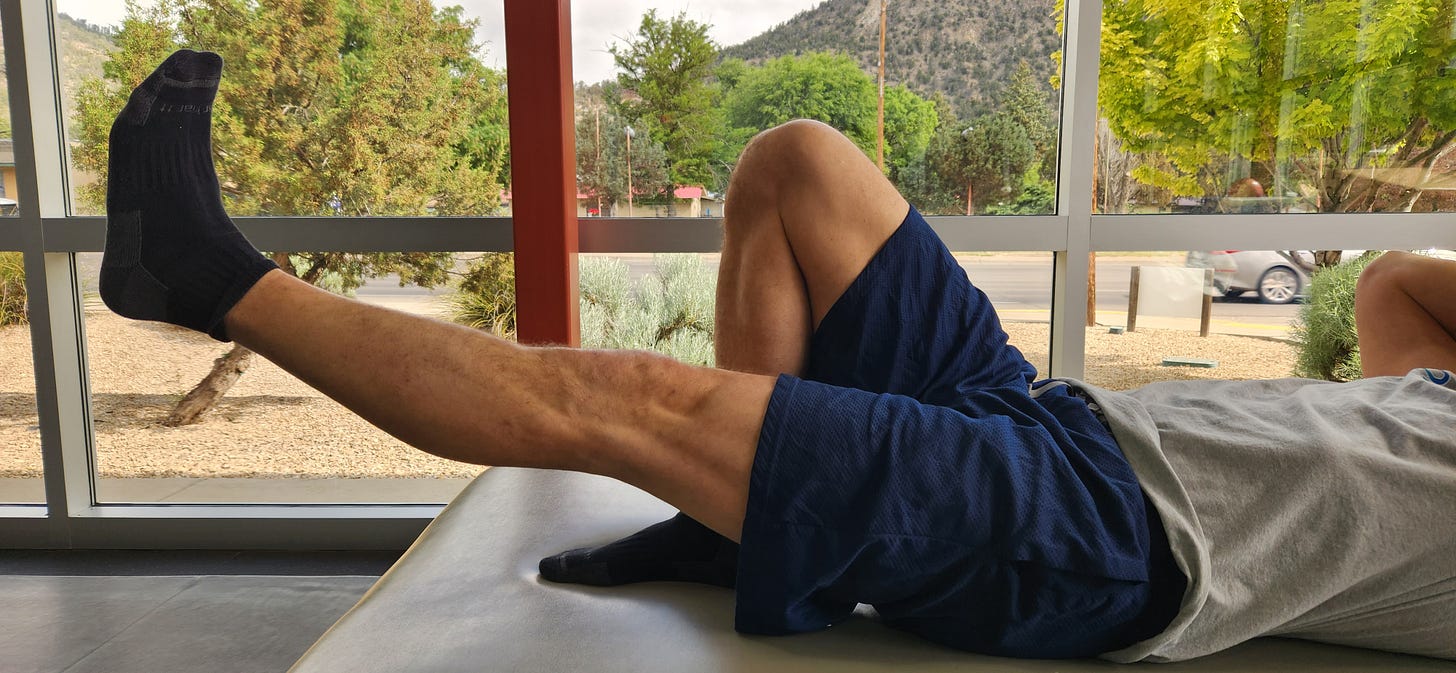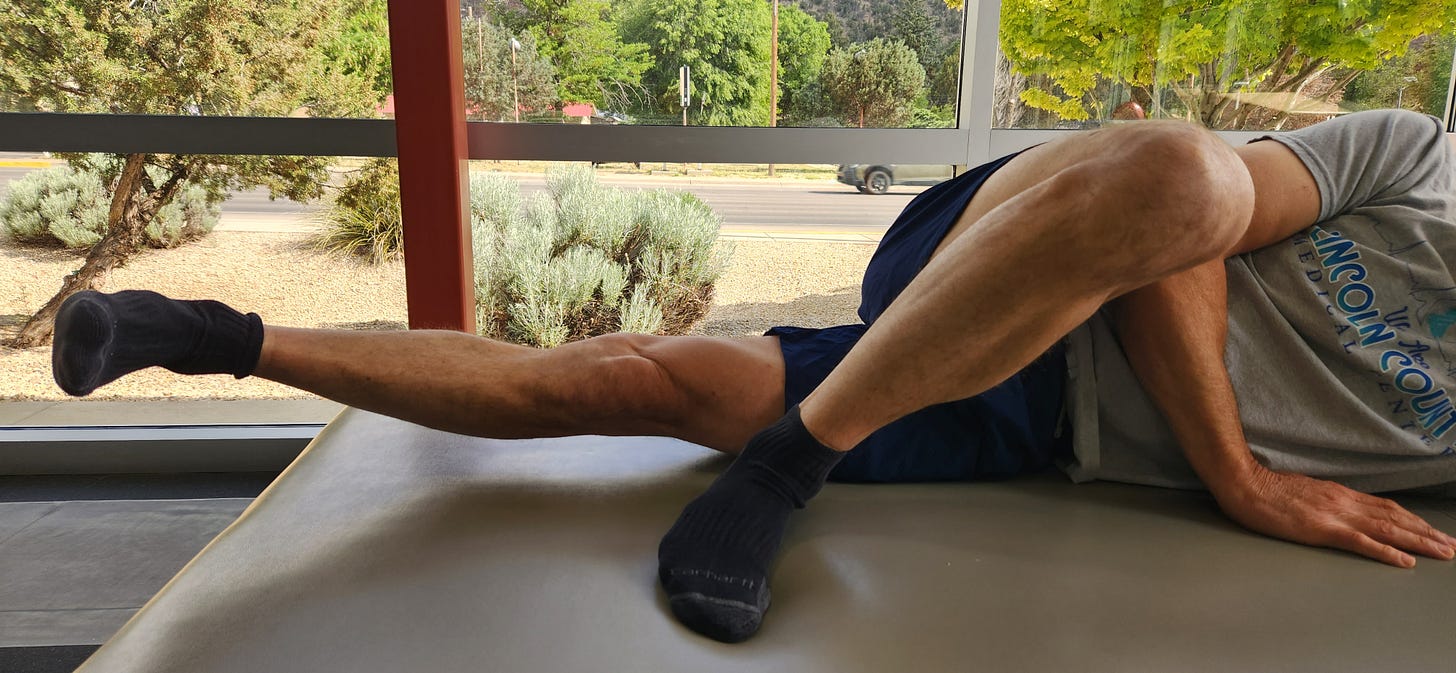How to avoid meniscus surgery
This is not medical advice.
Firstly, you need to be seen by a surgeon. If they allow physical therapy, then this may be one route to consider. There are more exercise pictures near the end of the article.
The meniscus is knee cartilage that sometimes tears, and you have to have surgery to shave off the tear. It can be painful, limit your range of motion, feel like it’s “locking”, and make you limp.
I’m going to guess that I have only seen half of the patients successfully manage this without having surgery. There are many factors involved. If you have decent muscle strength, and are determined to avoid surgery, there are some things worth trying. Most people are unwilling or unable to put in the time necessary, so the success rate could be higher.
You have nothing to lose
If you are someone who wants to avoid meniscus surgery, I will tell you to ride a stationary bike everyday, “like a new religion.”
If you are limping badly, and unable to function, you are more likely to need surgery. You don’t want to make things worse over time, being too stubborn (like me).
If you do have to have surgery, you might as well get in shape for this.
What the bike may offer, is gentle range of motion in a non weight bearing posture. People usually have more pain standing, because there is pressure on the meniscus. The bike offers ROM, strengthening, joint fluid motion, which may improve healing potential, however I do not think that is definitively proven. The meniscus has relatively poor blood supply and healing potential.
You will also need about 100-105 degrees of knee flexion to complete a full revolution on a bike. If you don’t have that kind of range of motion due to the injury, you need professional in person guidance on whether or not you should be stretching. Most likely the answer is yes, however this still needs to be checked. If you are seated in a chair, your knee is most likely bent at 80-90 degrees for reference.
The equipment
If you don’t have a bike, you can sometimes find a used “coat rack” on craigslist. You don’t need an expensive bike pictured above.
You don’t want to go too cheap either. A new bike, with decent quality is in the $200-400 range. I have had several patients buy equipment on the internet, and shipping takes months, since the supply shortages.
You could also consider a gym membership, but I tell people to ride the bike twice a day, for 30-60 minutes per day. That won’t work for most people to hit the gym 2x/day, everyday.
You want to buy a stationary bike with smooth magnetic or wind resistance. Those old models with strap friction or mechanical screw resistance just feel horrible. If it doesn’t feel good, you won’t use it.
Many of my patients cannot safely sit on top of a Schwinn Aerodyne. It sits up high, and could tip over if you are not balanced correctly. Those clients need a recumbent bike.
Other exercises
I’m not a big fan of straight leg raises normally, however this is non weight bearing, and may be correct for your pain situation. If any of these exercises hurt or cause pain, do not perform them. With straight leg raises pictured above, 5 perfect repetitions are better than 10 sloppy ones. The knee must be as straight as possible. Don’t do more than 10, or with weight, as they can torque on the lower back too much. Stabilize the lower back before lifting the leg.
The planks are good for strengthening muscles across the knee joint, however may cause pain in some people. Don’t do them if they are painful.
Balancing stabilization
If you don’t have pain standing, consider balancing on one foot. The act of balancing fires all the muscles surrounding the knee.
Again, you have nothing to lose by trying. If I am facing this problem, I am going to try this routine, and see how far I can get the symptoms to recede.












